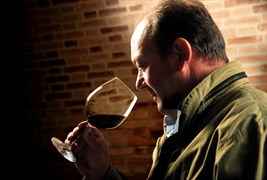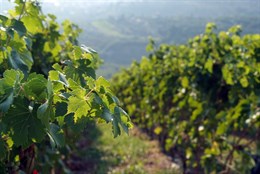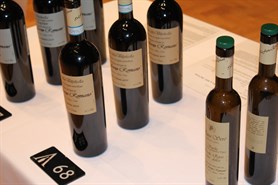 During Armit’s fantastic Italian Trade Tasting earlier this month, I grasped the opportunity to spend some time with Marco Dal Forno from the eponymous winery in Valpolicella / Amarone country. I have long been an admirer of the wines of this estate since I first tasted their Recioto from 1988 and some Amarones from the early nineties. Marco was showing his two releases from the 2009 vintage, and in my three years at Armit and in following the new releases, in my opinion this is the best so far.
During Armit’s fantastic Italian Trade Tasting earlier this month, I grasped the opportunity to spend some time with Marco Dal Forno from the eponymous winery in Valpolicella / Amarone country. I have long been an admirer of the wines of this estate since I first tasted their Recioto from 1988 and some Amarones from the early nineties. Marco was showing his two releases from the 2009 vintage, and in my three years at Armit and in following the new releases, in my opinion this is the best so far.
I was interested to learn some details about the grape growing and apassimento process (the drying of the grapes), and who better to ask than the man himself.
Terroir
The winery has done some in depth study into their terroir, including a 500 metre deep soil sample. They found that almost the entirety of this depth was free-draining gravel & light clay with no ground water. Normally this would put extreme stress on the vines, but Marco says not so. However, the yields are miniscule as you would imagine and this, in part, counts for the incredible, natural concentration in the wines. The other part comes from the concentration obtained from the drying process.
Valpolicella
The Valpolicella is in fact a mini-Amarone which is made from grapes from younger vines which are then air-dried for approximately 20 days. This process yields a mere 30 litres of wine from 100 kg of grapes.
Amarone
For the Amarone, the vines are more mature, then air-dried for 40 – 50 days and the yield is reduced even further, down to 15 litres. These wines are not cheap, and now you can see why.
It is also interesting to note that the Amarone is 16.5% in alcohol, so you need a fairly robust yeast to ferment to that level. Prior to the 2009 vintage all the wines had been made with spontaneous ferments, using only yeasts which occur naturally in the vineyard and those which live in the winery. However, Marco has been working with a local University to isolate a particular yeast strain, from their vineyard, which now used to inoculate the vintage. This has given them better control of the fermentation, as you can imagine with the degree of concentration of sugar in these musts, these yeasts have their work cut out.
 The 2009s
The 2009s
And as for the wines: well, despite the high concentration the wines are never wanting for balance. There is still good acidity and freshness with tannins that envelop the palate rather than attack. What is the most impressive thing of all is how easy they are to drink at this stage. There is no doing denying that they command your attention, but the openness and generosity is staggering for wines that have the potential to evolve and develop over 20 years on more.
